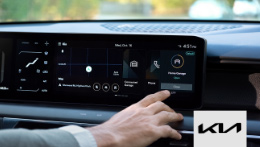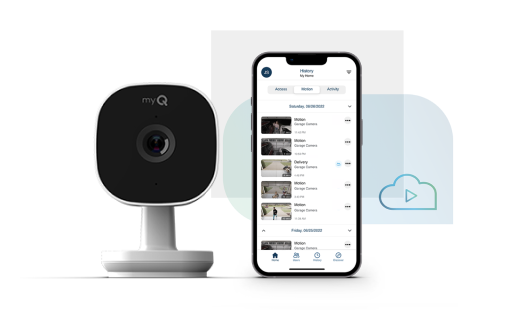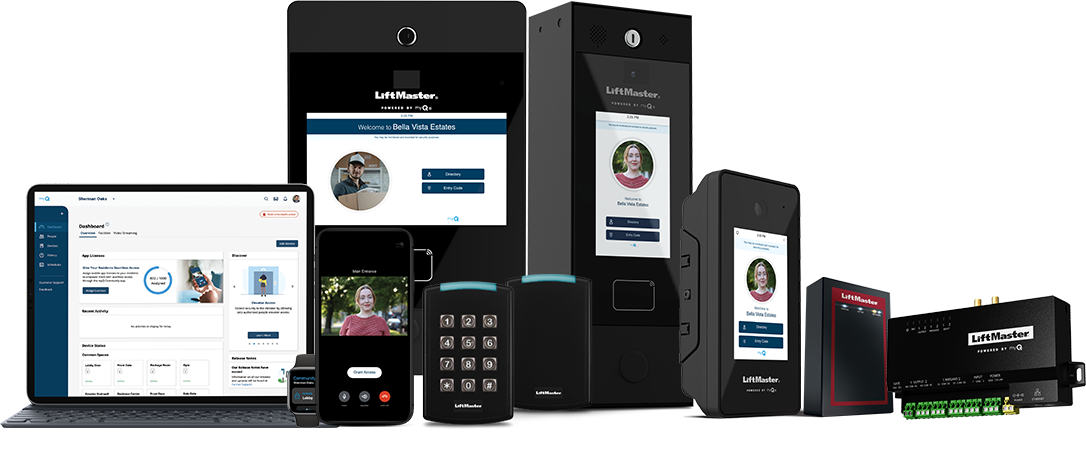Do Video Doorbells Record All The Time?
Do Video Doorbells Record All The Time?
A video doorbell is one of the most popular smart devices for improving home security. In fact, a 2023 study from SafeHome.org revealed that 45 million U.S. households now include a video doorbell—up from just 32 million two years earlier. With the ability to see, hear, and speak to visitors from anywhere, it provides added peace of mind. But while these devices are growing in popularity, many homeowners still have questions about how they actually work, especially when it comes to recording.
The answer depends on the device, your preferences, and how you want your doorbell cameras to support your daily routine. This guide explains how video doorbells with recording options work, the difference between continuous and motion-activated recording, plus how to decide what’s right for your home.,
Continuous vs. Motion-Activated Recording: What to Know
Do video doorbells record all the time, or only when motion is detected? There are two types of recording options, and understanding them helps explain how doorbell cameras work in everyday use.
Continuous Recording
A video doorbell with continuous recording captures everything, 24/7. This creates a full record of all activity outside your door, providing constant footage you can review anytime. Keep in mind, though, that this often requires a paid video storage plan .
Motion-Activated Recording
Most video doorbell models use motion detection to trigger recording only when activity occurs. When someone approaches your door or presses the chime, the camera records a clip, allowing you to see exactly what happened, without storing hours of unnecessary footage.
Factors That Affect Recording Settings
Several factors impact how your doorbell cameras work, including:
- Storage: Continuous recording requires more space, often through cloud services.
- Power Source: Wired doorbells are better suited for constant power demands.
- Battery Life: For wireless doorbells, continuous recording can drain batteries faster.
- Subscription Plans: Many smart doorbell cameras offer different features based on your plan.
Before deciding, consider how you plan to use your device and what level of security your home needs.,
Pros and Cons of Continuous vs. Motion-Activated Recording
Both options, continuous vs motion-activated recording, have benefits as well as a few trade-offs. Let’s explore them below.
Continuous Recording: When It Makes Sense
Pros:
- Captures everything, even unexpected events
- Provides detailed footage for security system reviews
- Helpful for monitoring high-traffic areas
Cons:
- Requires significant storage, often paid cloud space
- Can strain Wi-Fi bandwidth
- May raise privacy concerns, depending on your neighborhood
Motion-Activated Recording: Smart and Efficient
Pros:
- Only records relevant activity, saving storage
- Easier on battery life for wireless models
- Provides focused footage of important moments
Cons:
- Could miss background details before motion is triggered
- Dependent on accurate motion detection settings
- May require fine-tuning to reduce false alerts
If you’re comparing options for a video doorbell with recording, consider how much footage you realistically need to store and how often you’ll review it.
How to Choose the Right Recording Option for Your Needs
Finding the best setup starts with understanding your home’s layout and your personal security preferences.
Privacy, Security, and Usage Preferences
If your home is in a quiet neighborhood with low foot traffic, a motion-activated video doorbell may be all you need. For busier areas or if you want full footage at all times, a video doorbell with continuous recording may be worth the extra storage.
Consider these factors:
- Privacy: Continuous recording means constant monitoring—ensure neighbors and people visiting your door are aware.
- Security: More coverage provides peace of mind but may require extra storage.
- Power Source: If you use a wired setup, constant recording is easier to support.
Key Features to Look For in a Smart Video Doorbell
The features that make the biggest difference include:
- HD video and audio for clear details
- Smart motion detection with adjustable zones
- Reliable alerts and mobile app control
- Storage options that match your preferences
- Long-lasting battery life or dependable wired power
Whether you choose continuous or motion-triggered recording, make sure the device fits your lifestyle and security goals.
How the myQ Doorbell Video Helps You Stay Connected
When it comes to smart doorbell cameras, myQ offers a practical, reliable option designed to keep your home protected, without overwhelming you with unnecessary footage.
Motion-Activated Features and HD Video Quality
The myQ Video Doorbell provides:
- High-quality HD video for a clear view of your door
- Smart motion detection that triggers recording only when needed
- Customizable alerts sent straight to your phone through the app
- Two-way audio, so you can talk to visitors from anywhere
Are you wondering how wireless doorbells work with myQ? The device connects to your Wi-Fi, with a simple setup and reliable performance. This gives you flexible placement, even if your home doesn’t have an existing wired connection.
Smart Video Monitoring Tailored to Your Home
Rather than relying on constant recording, myQ uses smart features like motion-triggered footage, saving space while keeping you in control. And with easy video doorbell installation, you can upgrade your security system without hassle. Following basic cybersecurity best practices—like strong passwords and regular updates—adds another layer of protection for your home.
It’s a smart way to stay connected, whether you're across the street or across town.
Choosing the Right Video Doorbell for Your Home
Most homeowners find that motion-activated doorbell cameras provide the right balance of convenience, privacy, and reliable protection.
No matter what you choose, understanding how the technology works and which features fit your lifestyle will help you find the best option for your home.
Sources:
Federal Trade Commission. How to Protect Your Privacy Online. https://consumer.ftc.gov/articles/how-protect-your-privacy-online
National Institute of Standards and Technology. 7 Tips to Keep Your Smart Home Safer and More Private. https://www.nist.gov/blogs/taking-measure/7-tips-keep-your-smart-home-safer-and-more-private-nist-cybersecurity
SafeHome.org. 2023 Home Security Market Report. https://www.safehome.org/resources/home-security-industry-annual/2023/
U.S. Consumer Product Safety Commission. Home Electrical Safety Checklist. https://www.cpsc.gov/safety-education/safety-guides/electronics-and-electrical-home/home-electrical-safety-checklist
 Smart Cameras
Smart Cameras


 Fire Station
Fire Station
